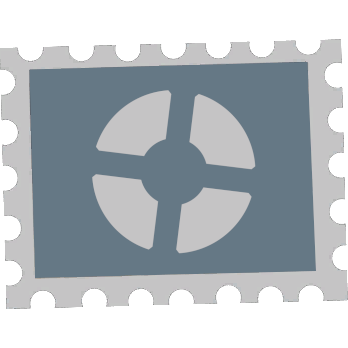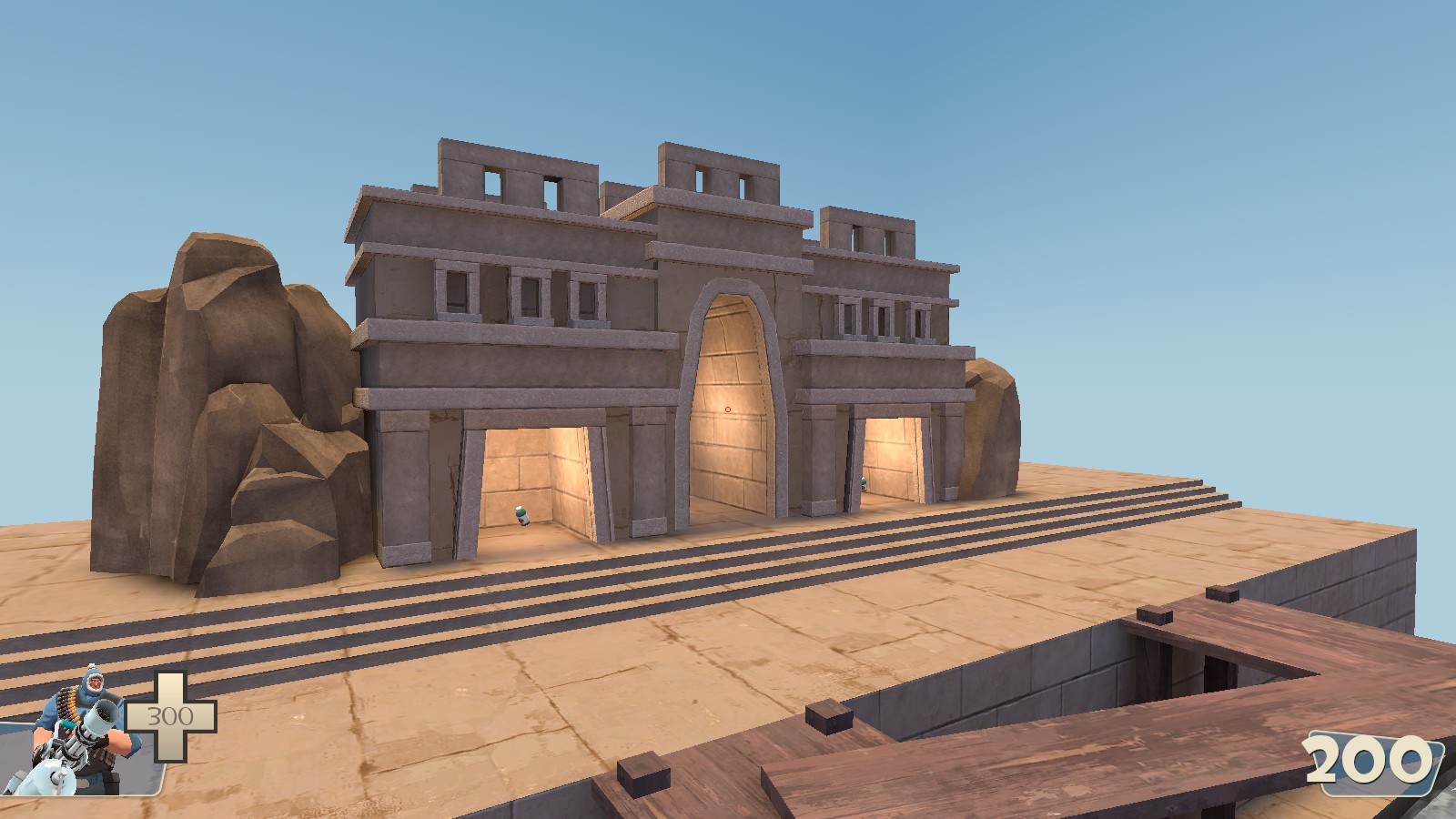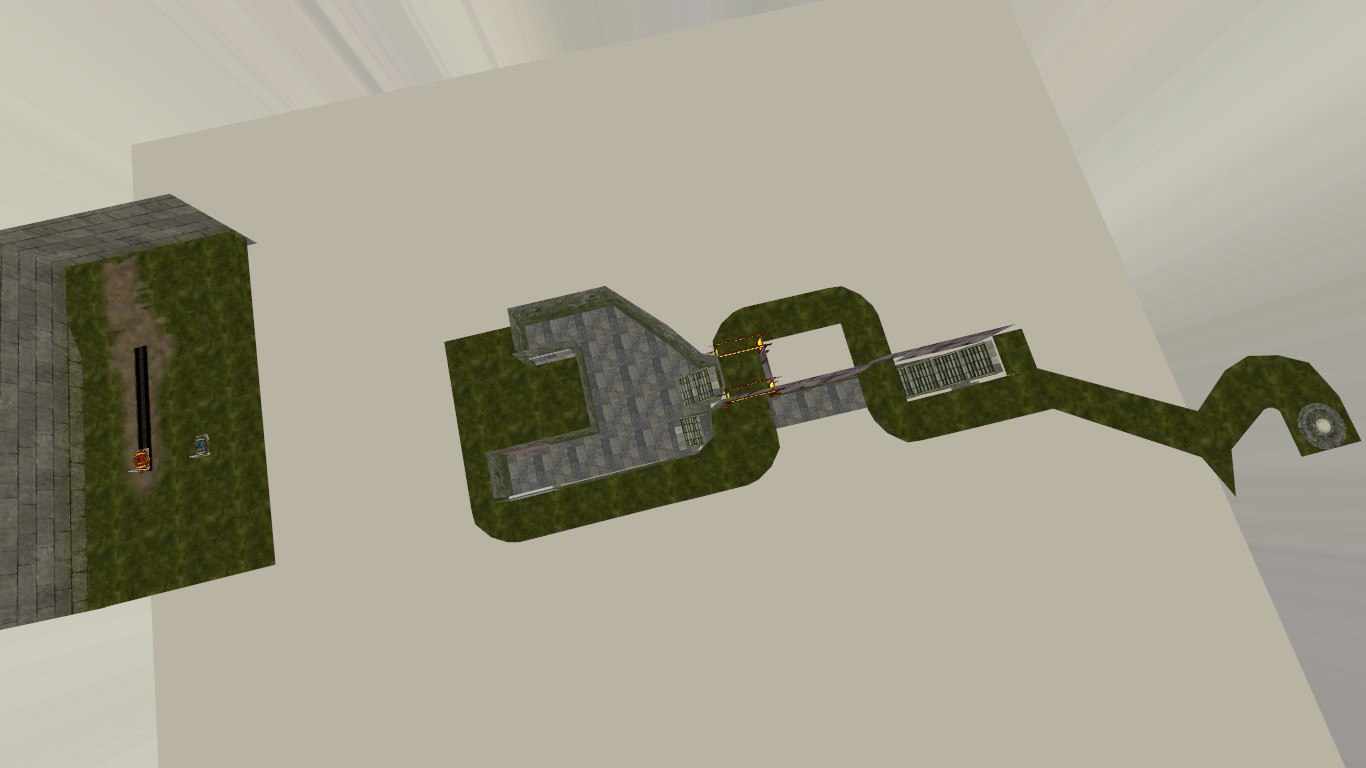WiP in WiP, post your screenshots!
- Thread starter Arhurt
- Start date
You are using an out of date browser. It may not display this or other websites correctly.
You should upgrade or use an alternative browser.
You should upgrade or use an alternative browser.
@Vel0city That's one awesome model. Have you done more of them?
Nope, at least not yet. I do have another main axle though, so in theory we (this is a 2-man project between a friend (who's a certified miller) and myself) could build one from scratch, which we're planning to do. Gotta finish this one first though.
you may or may not see this mill in TF2 in the not too distant future
Last edited:
I ripped this off from a Mayan.


I'm a greenhorn. Feedback appreciated.
The "roofed" structures on either side are jarring. Is the whole thing too rough looking to include in playable areas?
I didn't want to go all out and make a model and texture. Is this kind of geometry getting too complex for brush work?
I'm a greenhorn. Feedback appreciated.
The "roofed" structures on either side are jarring. Is the whole thing too rough looking to include in playable areas?
I didn't want to go all out and make a model and texture. Is this kind of geometry getting too complex for brush work?
M
Mark "Banda`MF" Ward
About to release another map.
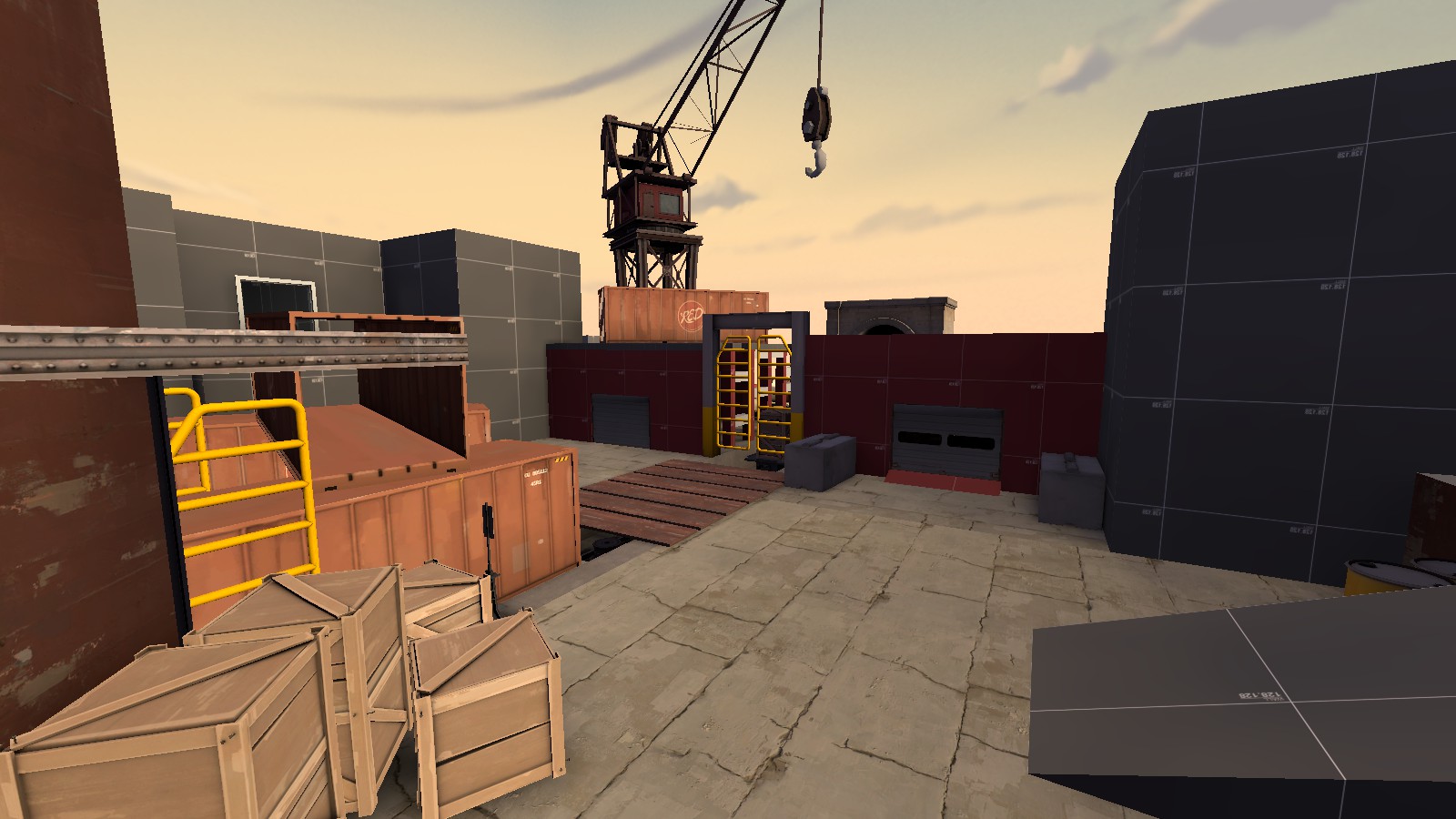
(Now looking back on this, it looks extremely cluttered. I might/should tone down the detailing in a2).

(Now looking back on this, it looks extremely cluttered. I might/should tone down the detailing in a2).
Is this kind of geometry getting too complex for brush work?
After running around official maps with props turned off, I can answer this with a definitive "no."
If thats not a laser I will be very sad.Coming to a map near you, soon™
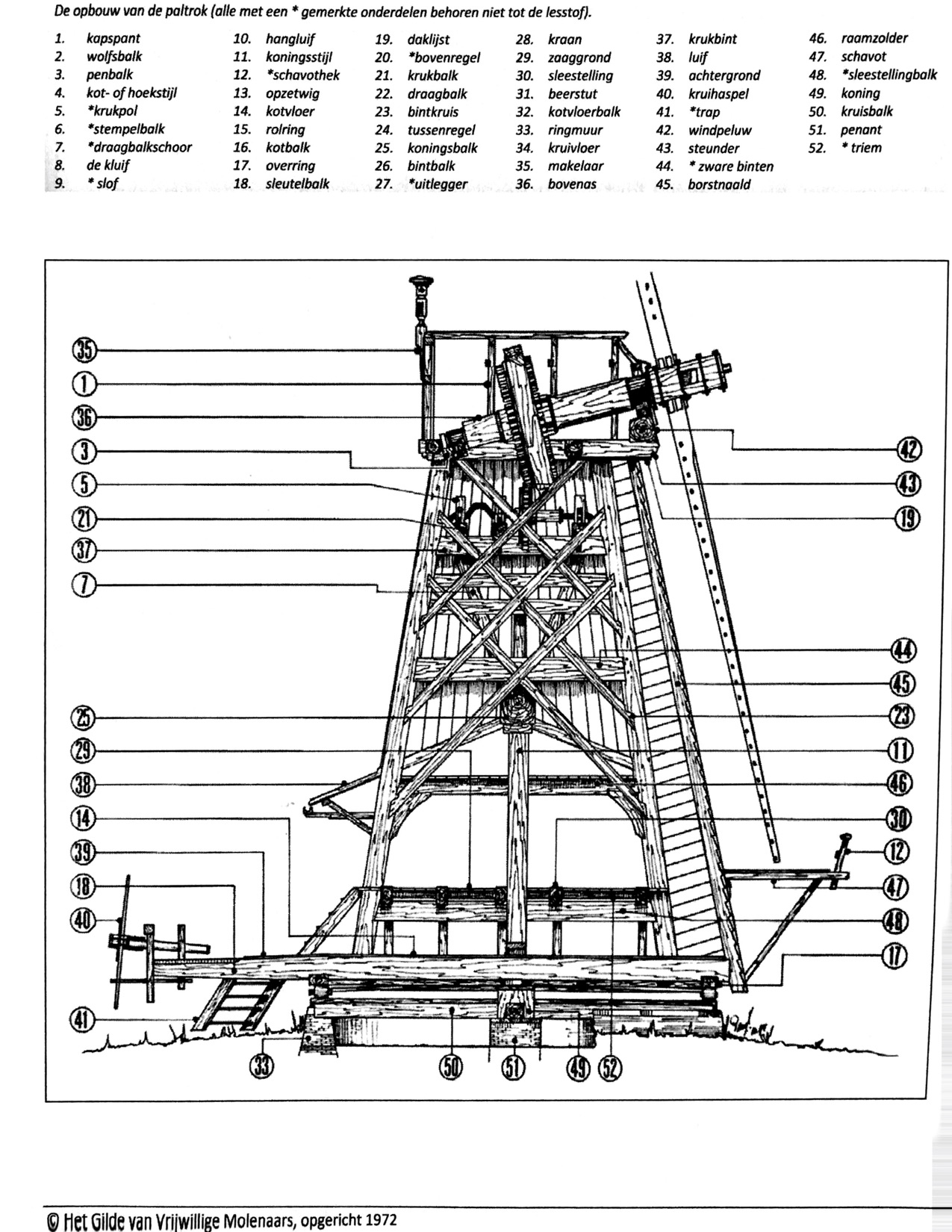
It's not. Right now.If thats not a laser I will be very sad.
Try to use google translate, im quite certain (actualy it already has been proven in the post above me, but at that time i already was typing this) it doesnt even translate them properly since these names are something i cant even remember to ever have seen in any dutch lesson. At least i tried to find the origin for them  I might be incorrect in these, but hopefully does give an indication of what they mean.
I might be incorrect in these, but hopefully does give an indication of what they mean.
wolfsbalk is a sort of beam at the back of the structure for support
beerstut is again something along the lines of a support beam
raamzolder is funny because zolderraam is still a commonly used name for an attic window. But isnt the same as what they mean in this. But in this case it the position of a support for a saw (the location where a 'zaagraam' is placed).
And yes, those names arent the most typical to use. And if you use them its most likely that you should focus on a medieval map as in recent dutch they arent used at all outside of puzzles (note that i did look up these words in a puzzle dictionary ).
).
zaag = saw, rand = edge, grond = ground.
wolfsbalk is a sort of beam at the back of the structure for support
beerstut is again something along the lines of a support beam
raamzolder is funny because zolderraam is still a commonly used name for an attic window. But isnt the same as what they mean in this. But in this case it the position of a support for a saw (the location where a 'zaagraam' is placed).
And yes, those names arent the most typical to use. And if you use them its most likely that you should focus on a medieval map as in recent dutch they arent used at all outside of puzzles (note that i did look up these words in a puzzle dictionary
It actualy said zaaggrond on the image. Zaaggrand is not a dutch word, as that would be zaagrandAccording to Google translate, "zaaggrand" means "cutting edge". Sounds like a neat name for a map.
zaag = saw, rand = edge, grond = ground.
Some of those words sound like great map names. "wolfsbalk", "beerstut", and my personal fav, "raamzolder."
Dutch people will be all like, "these map names make no damn sense," and everyone else will be like "change nextmap to beerstut, I don't know what it is, but it sounds awesome."
Did I just give about 50 map names based on Dutch names for parts of a windmill?According to Google translate, "zaaggrand" means "cutting edge". Sounds like a neat name for a map.
How does "Paltrok" sound? ill take that anyway but still want to knowSome of those words sound like great map names. "wolfsbalk", "beerstut", and my personal fav, "raamzolder."
Dutch people will be all like, "these map names make no damn sense," and everyone else will be like "change nextmap to beerstut, I don't know what it is, but it sounds awesome."
Yes you did, and that was cutting edge technology. You saw right when deciding to make a map based on it.
Still note that the translation of 'kraan' is very likely already used in maps (crane)

Still note that the translation of 'kraan' is very likely already used in maps (crane)
https://translate.google.com/#nl/en/paltrok click on the button for speach and you can get an ideaHow does "Paltrok" sound?
-"cutting edge"Yes you did, and that was cutting edge technology. You saw right when deciding to make a map based on it.
Still note that the translation of 'kraan' is very likely already used in maps (crane)
-schematic is that of a sawmill
iseewhatyoudidthere





